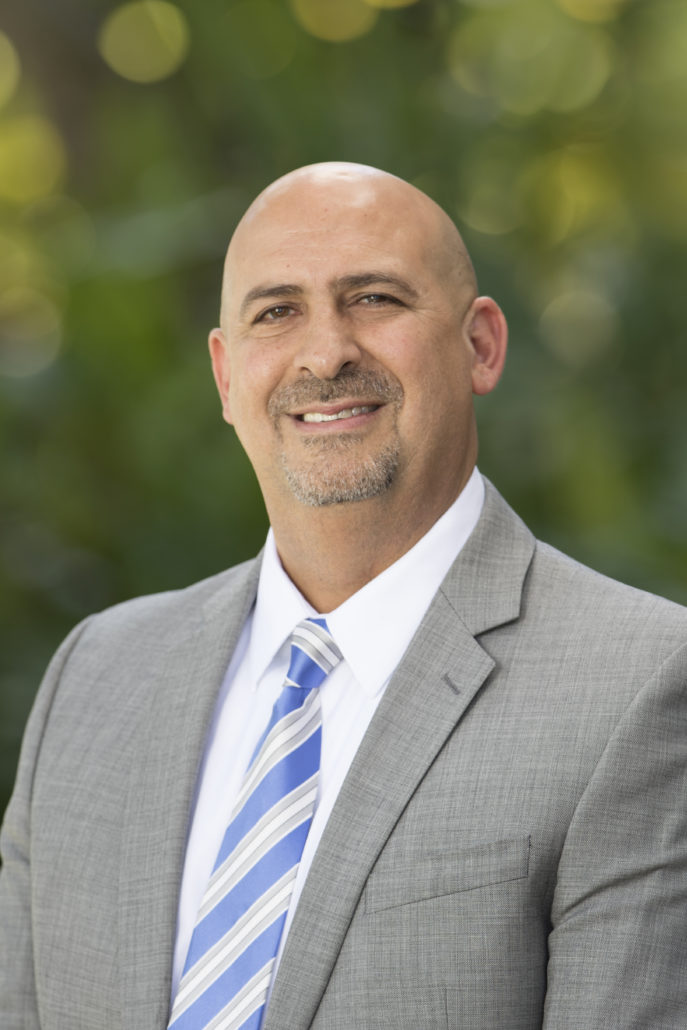Crocker Partners planned big things for Boca Raton’s Midtown neighborhood, but city politics stopped it. Now, the company plans big things for the former IBM headquarters, which the company sold in 1996. It’s now called the Boca Raton Innovation Campus, or BRIC.
To attract more entrepreneurs who see Boca Raton as a hub for startups, Crocker will spend $28 million to upgrade amenities at BRIC. The company bought the property roughly a year ago. At 1.7 million square feet—IBM once had 10,000 employees there—it’s the largest office space in Florida.
Crocker Partners Managing Partner Angelo Bianco said some of the investment will go toward simply opening up what had been a very secure facility. IBM developed the personal computer and the smartphone in Boca Raton and tried to guard its secrets as much as possible. The industry term for such projects is “skunkworks.” With many tenants—there are roughly three dozen now, along with about 5,000 employees—such design doesn’t work.
A presentation center will be able to hold roughly 1,000 people. Bianco envisions it as a place for TED Talk-type conferences. There will be a Science, Technology, Engineering, Arts and Technology (STEAM) center, a food court with seven restaurants and two artisanal coffee shops.
Bianco said, “People will want to get married there.”

Perhaps, but the main goal obviously is to pack the campus with tenants. To that end, Bianco said, Crocker also will change the roads and redesign the entrances, which he described as looking like “a Soviet gulag.”
Many in Boca Raton, though, regard the campus as iconic. The architect was Marcel Breuer, who led the Modernist movement and whose portfolio includes the Whitney Museum in New York City. So Crocker assembled an advisory panel of 12 residents to give input. Examples: Constance Scott, a former city council member, and Peg Anderson, a longtime volunteer who serves on the Downtown Advisory Committee. In addition, Crocker has held community events. They have been quarterly, Bianco said, and will become monthly.
The recent move of Modernizing Medicine—which many consider Boca Raton’s signature startup—to BRIC likely spurred even more interest in the facility. “I see it,” Bianco said, “as a convergence of technology and art.”
Crocker representatives have met with the community advisory board and are about to seek permits. Bianco said the company hopes to get all city approvals by the end of the year.
The “new” era of Delray’s CRA

The resignation of Delray Beach Community Redevelopment Agency Director Jeff Costello, which I reported on Tuesday, says as much about how the agency has changed as it does about Costello.
In January 2015, Costello got the job after being Diane Colonna’s assistant. The CRA board then was independent, and Colonna ran the agency for 15 years with a forceful streak of independence. The CRA boundaries comprise about 25 percent of the city, and the city commissioners elected in 2013 and 2014 increasingly complained that needs outside the CRA were going unmet while the agency stayed flush.
So while the CRA still bought land, worked to create affordable housing and brokered redevelopment projects, Costello found himself working with three city managers to coordinate spending. The CRA took on more work that had been in the city’s budget.
Then last April, the city commission abolished the independent board and took control of the CRA, adding two appointed members to retain a seven-member board. That change injected city politics directly into the CRA. Comparatively quickly, it has become a much different agency than it was under Colonna.
City Commissioner Ryan Boylston has raised the issue of whether the CRA director should report to—and be hired by—the city manager. Such an arrangement would be similar to how the Boca Raton CRA operated when Jorge Cameo was the director and reported to City Manager Leif Ahnell. Ahnell later abolished the position and assumed control of the CRA.
Such a change in Delray Beach could cut the direct influence of politics. It also would greatly increase the responsibilities of the next city manager and could require the commission to offer a higher salary. With the next permanent manager likely to take over just before Costello’s departure, however, timing could favor such a change.
Costello said he would leave with “mixed emotions,” citing a list of CRA accomplishments and his sadness at leaving a “dedicated” staff. The next director’s priority will be to oversee completion of Frog Alley—the BH3 project on the three blocks next to the Fairfield Inn. Delray Beach considers the project key to redevelopment of West Atlantic Avenue.
And the next director will face more scrutiny. This isn’t Diane Colonna’s CRA anymore.
Council: Thumbs down on current Boca National plan

As I had predicted, the Boca Raton City Council refused to accept the Greater Boca Beach and Park District’s design for the proposed Boca Raton National golf course. The refusal came during Tuesday’s meeting between the two agencies.
With that decision, the council wouldn’t make any financial commitment toward construction of what would be Boca Raton’s new, 18-hole public course. So district board members will discuss options at their meeting Monday. Councilman Andy Thomson said the district will come back to the city with ideas on financing and design at another joint meeting. I will have more on this issue next week.
Another angel

Add Arthur Remillard to the long list of philanthropic angels in Boca Raton.
In 2006, Remillard gave Boca Helping Hands $2 million. That money allowed the organization to buy a building and transform itself from a soup kitchen to a full-service counseling center. The building opened in 2010. It is the largest gift Boca Helping Hands has received.
Now Remillard’s estate has donated another $1 million, which is the largest gift to Boca Helping Hands’ endowment. In a news release, Remillard’s son said his father “was passionate about wanting to help establish a comprehensive resource center for the less privileged citizens of this great town.”
Before Remillard’s first gift, Boca Helping Hands served roughly 36 meals a day. A representative said the organization now serves 4,000 per month. Services are designed to make families self-sufficient.
Every time that happens, Arthur Remillard deserves a thank-you.







